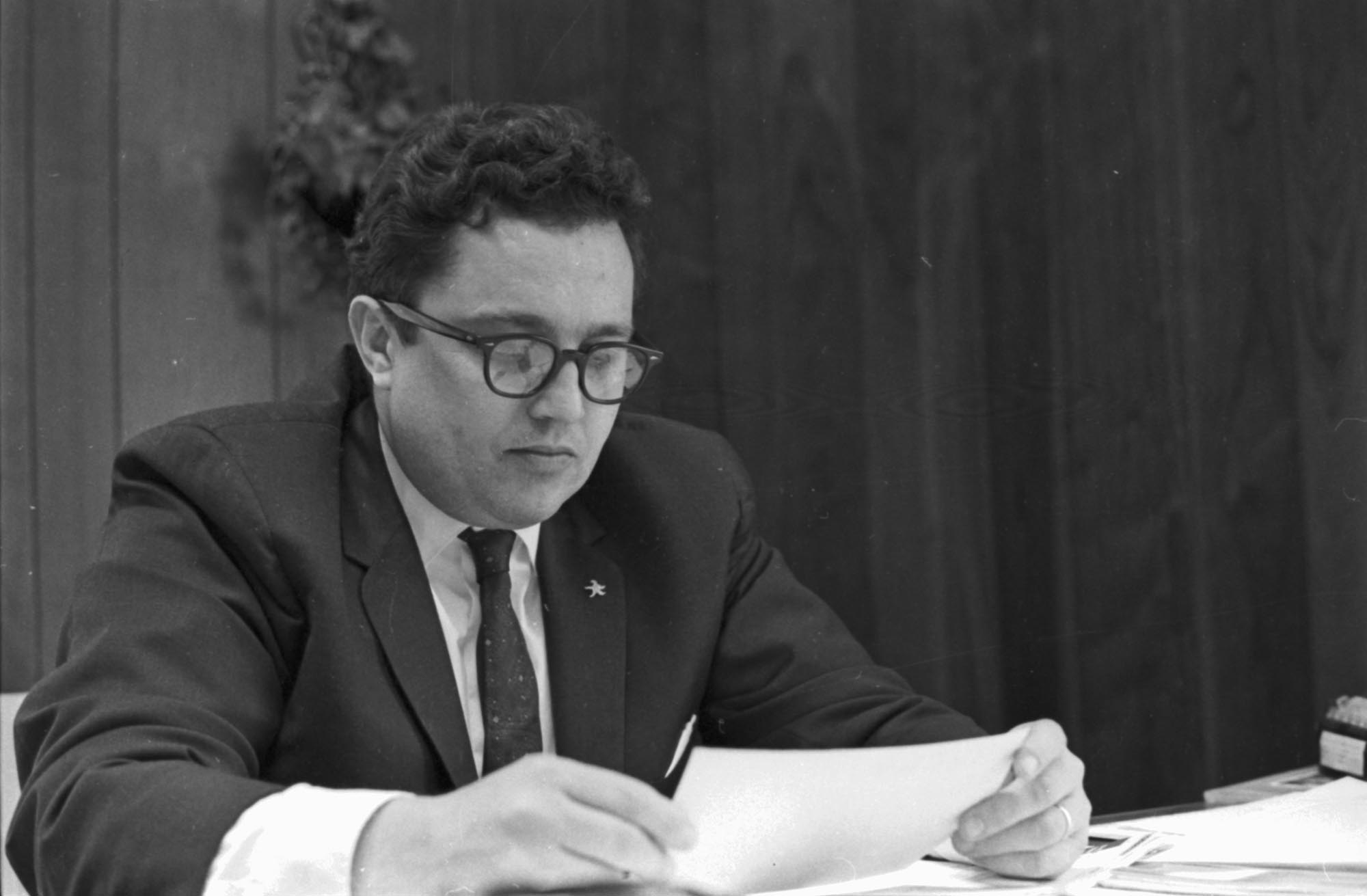President Charles J. Flora, photographed in 1967. Image courtesy of Western Libraries Special Collections, Campus History Collection.
By Eva Bryner
For over 40 years, Western has been without a College of Ethnic Studies. The university reported it’s highest diversity rates with 26% of students enrolled in the fall of 2019 identifying as students of color, according to the Diversity, Equity and Inclusion statistics.
Administration, faculty and students are working towards creating a new Ethnic Studies program at Western, and diving into Western’s history through archives can inform that process.
“It’s clear for the past several years the principal motive and goal of this institution has been diversity,” Charles Flora, President of Western from 1967 to 1975, said in a 1999 interview.
In the fall of 1969, Western established three cluster colleges: Huxley, Fairhaven and the College of Ethnic Studies [CES]. In just nine years, the CES lost funding and the courses were dispersed throughout the university. The CES closed its doors in 1978, leaving students questioning what happened within that time.
Flora witnessed many pivotal events during his time and recounted them in 1999 for the Centennial Oral History Interview project.
In the oral history, Flora recalls the 1968 sit-in protesting the recruitment of students for the Vietnam War in what is now known as the Career Center.
“I was very concerned to avoid bloodshed on campus…it was a real threat and a real possibility on several occasions,” Flora said in 1999. “If we ever call the police to campus and there is a large demonstration… the students will perhaps throw stones in order to equalize things and the police would shoot students.”
Moments like these brought an air of social change, and with it, student leaders like Reginald Butler came into the narrative.
“[Butler] really got the momentum going among students for an ethnic studies college. He didn’t intend to do that, but the product of it was the ethnic studies college, and he was one of the faculty members in ethnic studies,” Flora said in a 1999 interview.
The CES was among one of three cluster colleges established out of pressure from students and faculty of color, and faced resistance from the start, noted by Flora in a 1997 interview.
By 1970, enrollment in the CES hit 58 students and a total of three faculty members, according to a 1969 memo to president Flora. In this same memo, the college requested three more faculty to be staffed in 1970, prompting the struggle to find funding that would eventually be detrimental to the program.
“It was clear that Ethnic Studies was viewed as being somewhat of a non-academic area and the other colleges would rather be affiliated with arts and sciences,” Jesse Hiraoka, previous Dean of CES said in 2000, “I even tried to get the liberal arts department to work with the CES because I was technically a member of that department. But none of that worked out.”
When the money ran tight among the university due to an economic downturn, the cluster colleges were the first place administration looked for budget cuts.
“No matter how great the quality was, we were cutting anything that wasn’t essential,” Robert Monahan, a faculty member in the geology department said in a 1997 interview, “[CES was] an economic cut rather than a failure.”
After dealing with high faculty turnover in the department, a lack of funding and resources from the state and donors, and a difference in general social interests, the college closed its doors in 1979.
“Part of it was the setting and the people that were up in Bellingham. They had a strong interest in ecology, a strong interest in nature. People left social problems elsewhere, hoping to find some sort of haven in Bellingham,” said
The college was short-lived at Western, a fact which continues to impact students today.
Faculty and students, including the Students for Ethnic Studies Coalition, continue to advocate for the creation of a Ethnic Studies program.
SESC members conducted research during the summer of 2019 on other universities’ Ethnic Studies programs and presented their findings to Provost and Vice President of Academic Affairs Brent Carbajal and other members of Western administration, according to Carbajal.
The SESC was not avaliable for comment.
As for the creation of an Ethnic Studies program at Western, faculty and administration put together a pre-decision package, asking for the allocation of funds from the state of Washington for the program.
“If we’re going to get new money to do this, the legislature has to be able to see something concrete with respect to the curriculum,” Carbajal said. “I actually think that the pre-decision package did a good job of explaining what we probably, schematically, want to do, so I don’t think there’s actually that much more work to be done on that.”
The current timeline for the program is heavily dependent on developing the curriculum and getting it approved by the Academic Coordinating Commision, according to Carbajal.
“My sense of the major concern is that to spend the time to develop an entire program and not know if the state’s going to fund it, or what our ability to even fund it or implement it incrementally, that’s problematic. I think that’s more the issue,” Carbajal said.
The earliest the program could be implemented at Western is the fall after being seen by the ACC, according to Carbajal.
Reflecting on the future of Ethnic Studies at Western, Carbajal is adamant that history will not repeat itself.
“Who knows what the future would hold,” Carbajal said. “But we would not implement a program with the intent that it goes away.”

